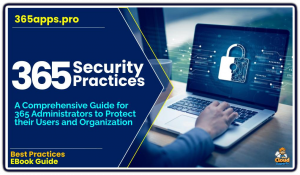Deploy Attack Surface Reduction Rules from Microsoft Intune
ASR rules in Microsoft 365 are a powerful tool for reducing an organization’s attack surface and protecting against ransomware, malware, and other threats.
 Attack Surface Reduction (ASR) rules in Microsoft 365 are a set of security features designed to reduce the attack surface of an organization by blocking or restricting common attack vectors used by malicious actors, such as ransomware, malware, and other cyber threats.
Attack Surface Reduction (ASR) rules in Microsoft 365 are a set of security features designed to reduce the attack surface of an organization by blocking or restricting common attack vectors used by malicious actors, such as ransomware, malware, and other cyber threats.
These rules are part of Microsoft Defender for Endpoint and help prevent exploits, malicious scripts, and unauthorized actions by enforcing proactive controls on endpoints.
By limiting the ways attackers can infiltrate systems, ASR rules enhance an organization’s security posture.
What Are ASR Rules?
ASR rules target specific behaviors and processes that are commonly exploited in cyberattacks, such as:
- Executing malicious scripts (e.g., PowerShell, JavaScript, or VBScript).
- Running untrusted or unsigned processes from suspicious locations (e.g., USB drives or email attachments).
- Exploiting vulnerabilities in applications like Microsoft Office or web browsers.
- Performing fileless attacks or abusing legitimate system tools (e.g., WMI or rundll32.exe).
Each rule focuses on a specific threat vector and can be configured to operate in modes like Audit, Block, or Warn, allowing organizations to test and fine-tune their deployment.
ASR rules in Microsoft 365 are a powerful tool for reducing an organization’s attack surface and protecting against ransomware, malware, and other threats. By targeting common exploit techniques, restricting malicious behaviors, and safeguarding critical data, ASR rules provide a proactive layer of defense.
Proper implementation, starting with audit mode and gradual deployment, ensures minimal disruption while maximizing security. For organizations using Microsoft Defender for Endpoint, ASR rules are a critical component of a robust cybersecurity strategy.



